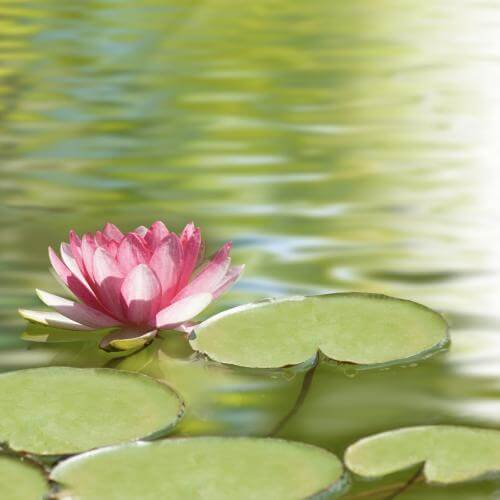
The lotus flower has a strong spiritual significance in many religions and cultures. Thanks to its color, scent and shape of the flower, it has become a symbol of purity, rebirth, eternity and spirituality.
Indian lotus, lat. Nelumbo nucifera, by other names such as Padma or Kamala, is a perennial aquatic plant. It grows in shallow, stagnant and clear waters, especially in areas from Southwest Asia to the Philippines and Australia. In India, it grows very abundantly in the basin of the sacred river Ganges.
Lotus as a Spiritual Symbol
The lotus flower has a strong spiritual significance in many religions and cultures. Thanks to its color, scent and shape of the flower, it has become a symbol of purity, rebirth, eternity and spirituality. It plays an important role in Egyptian mythology, Hinduism and Buddhism, where it has become a national plant of Indians and ancient Egyptians as a symbol of purity and fertility. The Indian lotus symbolizes the path of spiritual development, as it begins its growth in muddy soil, then grows through the water all the way to its surface, and there it blooms fully in the light of the sun's rays.
Health Effects of the Indian Lotus
Lotus is also a very popular Ayurvedic herb with many health effects that are hidden in its flower, seeds and rhizome. It contains substances such as asparagine, nelumbin, starch and vitamin C. Nelumbin supports the movement of body fluids and mucus. Asparagine helps to excrete excess fluid from the lungs and airways, and vitamin C significantly supports the immune system.
The Use of the Lotus in Ayurveda
In Ayurveda, the lotus is mainly used to calm the mind, strengthen concentration, soothe restless thoughts and encourage heart activity. It helps reduce anxiety and nervous tension, helps eliminate speech jams and cleanses the blood. It is also used for diarrhea, fever, liver disease, neuropathy, diabetes and urinary tract disorders. At the psychic level, it brings spiritual openness and exaltation.
In folk medicine, this plant is also used to remove metabolites that are toxic to the brain and to increase vitality, in the treatment of respiratory tract, kidney problems and fatigue. Lotus leaves and flowers are also used during the healing Ayurvedic sweating process of svedana, when they cover the eyes and heart to compensate for the effect of increased pitty.
From the Ayurvedic point of view of the concept of perception of basic tastes, the lotus contains 3 out of 6, namely astringent, sweet and bitter. As a result, this plant has cooling potential. It thus balances the kapha dosha (element of water) and the pitta dosha (element of fire). Due to its astringent and bitter taste, increases the vata dosha (element of air).
Ayurvedic Preparations with Indian Lotus
Nelumbo nucifera is an important and frequent part of our Ayurvedic herbal mixtures focused on individual health problems. In a more concentrated form, however, we recommend the hot drink Amla & Indian lotus to increase immunity and promote mental well-being and balance.
